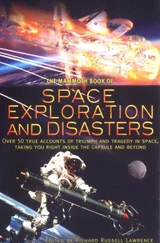When the Soviet R-7 (Semyorka) was tested on 3 August 1957, Soviet leader Mr Krushchev told the world that they had an operational ICBM. It was a bluff: it was a prototype. The USSR was not yet even developing ICBMs. On 4 October 1957 they launched Sputnik I.
On 5 October the New York Times reported: “The Device is 8 times heavier than the one planned by US.” The analyst Harry Schwarz wrote: “The competence in rocketry which that satellite shows is equally applicable to the field of weapons, particularly intercontinental ballistic missiles.”
President Eisenhower dismissed Sputnik as “one small ball in the air, something which does not raise my apprehensions, not one iota.”
When the news of Sputnik broke, the US Defense Secretary, Neil McElroy, was visiting Redstone. Von Braun appealed to him: “For God’s sake! Turn us loose and let us do something. We can put up a satellite in sixty days.” “No, Wernher, ninety days,” said a colleague.
The Soviets put up Sputnik II on 4 November 1957 and on 8 November the Army was given the authorization to make two satellite attempts. They succeeded in putting Explorer into orbit on 31 January 1958. Von Braun was summoned to Washington and his team handled the launch without him. The astronaut Buzz Aldrin wrote:
But if he couldn’t be at the Cape, von Braun made sure the Explorer launch was in the hands of his very best people. Willy Mrazek oversaw the Jupiter-C’s propulsion system, just as he had the prototype A-4 in Germany. Walter Haeussermann’s guidance and control laboratory had perfected the booster’s inertial guidance, and Haeussermann was there that day for the final premission tuning. Ernst Stuhlinger, head of the research projects office, did the troubleshooting at the Cape. Overall command of the test launch was under Kurt Debus and his missile firing laboratory. Debus had supervised hundreds of V-2 launches in Germany and New Mexico.
All day, strong winds delayed the launch as the Jupiter-C sat on the concrete platform of Launch Pad 5, supported by a flame-blasted Redstone gantry tower. Von Braun’s tone on the telephone showed how anxious he was, but he trusted his colleagues too much to interfere.
Then, at 10:48 pm, Debus completed the countdown and issued the ignition command from the firing bunker. The striped cylindrical payload package was “spun up” like a captive toy to stabilize the upper stage in flight. An orange glare ripped out as the Jupiter-C’s Redstone first stage roared to life. For several seconds flame blasted sideways from the Jupiter as it stood stationary on the pad.
Then the rocket climbed away into the darkness. Two and a half minutes later the upper stages were separated by an automatic timer. For the next six minutes the payload coasted higher to an apex 225 miles above the Atlantic. Walter Haeussermann’s guidance package worked perfectly. The second-stage cluster of solid rockets was brought parallel to the Earth’s surface by small thruster jets. Stuhlinger transmitted the command to ignite the second stage. After six and a half seconds, he ignited the third stage, comprised of three clustered Sergeants. Finally, he pressed the amber fourth-stage ignition button and the single-Sergeant satellite kicker motor ignited, accelerating Explorer to over 18,000 miles per hour, orbital velocity.
Medaris had insisted on a media blackout to prevent embarrassment if the mission failed and to keep down speculation about interservice rivalry. [Despite two Sputniks and the multiple Vanguard failures, the Navy was still in the satellite game.] No reporters were there to watch the delayed countdown and the spectacular launch. Residents of nearby Titusville and Cocoa Beach simply thought another secret missile was being tested. Two hundred and twenty-five miles above West Africa, the tiny Explorer satellite glided silently through the day-night terminator line and into brilliant sunlight. The satellite was the size of an overgrown titanium milk bottle and weighed only 10.5 pounds. To achieve orbit, Explorer’s centrifugal energy would have to counter-balance Earth’s gravity.
The first American listening station positioned to receive the radio beacon from a properly orbiting Explorer was the Goldstone tracking site in the California desert. Signals should have begun coming in at exactly 12:41 Pentagon. Pickering was on the phone with his people in California as the deadline passed. There was no signal from Explorer.
“Why the hell don’t you hear anything?” Pickering yelled.
Secretary Brucker looked up from a table littered with coffee cups and overflowing ashtrays.
“Wernher,” he asked, “what happened?”
Von Braun watched the sweeping second hand on the wall of the communications room. If they didn’t get a signal in 10 minutes, he would have to consider the mission a failure.
At 12:49 am, Pickering whooped with joy, holding the receiver against his shoulder Goldstone had Explorer’s signal. Von Braun beamed, then frowned. “She is eight minutes late,” he muttered. “Interesting.”
A duty officer telephoned President Eisenhower’s vacation retreat in Augusta, Georgia. Ike excused himself from his late-night bridge table to take the call, then recorded a radio announcement, reading calmly from a single sheet.“ The United States has successfully placed a scientific Earth satellite in orbit around the Earth. This is part of our participation in the International Geophysical Year.”
Politicians in the opposing Democratic Party noticed the “space gap”. In April 1958 President Eisenhower passed the National Aeronautics and Space Act of 1958 (“the Space Act”) which declared that “activities in space should be devoted to peaceful purposes for the benefit of all mankind.” It further declared “that such activities shall be the responsibility of, and shall be directed by, a civilian agency”. The Act further established the National Aeronautics and Space Administration to be the “civilian agency”, which should seek and encourage, to the maximum extent possible, the fullest commercial use of space.
Its aims were to contribute materially to one or more of the following objectives:
(1) The expansion of human knowledge of the Earth and of phenomena in the atmosphere and space;
(2) the improvement of the usefulness, performance, speed, safety, and efficiency of aeronautical and space vehicles;
(3) the development and operation of vehicles capable of carrying instruments, equipment, supplies, and living organisms through space;
(4) the establishment of long-range studies of the potential benefits to be gained from, the opportunities for, and the problems involved in the utilization of aeronautical and space activities for peaceful and scientific purposes;
(5) the preservation of the role of the United States as a leader in aeronautical and space science and technology and in the application thereof to the conduct of peaceful activities within and outside the atmosphere;
(6) the making available to agencies directly concerned with national defense of discoveries that have military value or significance, and the furnishing by such agencies, to the civilian agency established to direct and control nonmilitary aeronautical and space activities, of information as to discoveries which have value or significance to that agency;
(7) cooperation by the United States with other nations and groups of nations in work done pursuant to this Act and in the peaceful application of the results thereof;
(8) the most effective utilization of the scientific and engineering resources of the United States, with close cooperation among all interested agencies of the United States in order to avoid unnecessary duplication of effort, facilities, and equipment; and
Читать дальше












